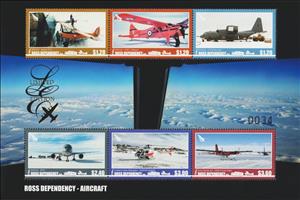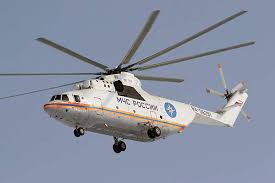Souvenir Sheet: Aircraft in Service in Ross Dependency (Ross Dependency 2018)
Aircraft in Service in Ross Dependency (Ross Dependency 2018)
07 November (Ross Dependency ) within release Aircraft (2018) goes into circulation Souvenir Sheet Aircraft in Service in Ross Dependency face value 12.60 New Zealand dollar
| Souvenir Sheet Aircraft in Service in Ross Dependency in catalogues | |
|---|---|
| Michel: | Mi: NZ-RO BL20 |
Souvenir Sheet is horizontal format.
Also in the issue Aircraft (2018):
- Stamp - B757 face value 2.40;
- Stamp - C130 Hercules face value 1.20;
- Stamp - Auster T7C face value 1.20;
- Stamp - DHC6 Twin Otter face value 3.60;
- Souvenir Sheet - Aircraft in Service in Ross Dependency face value 12.60;
- Stamp - AS350 B3 Squirrel Helicopter face value 3;
- Stamp - DHC2-Beaver face value 1.20;
- Souvenir Sheet - Aircraft in Service in Ross Dependency face value 12.60;
Souvenir Sheet Aircraft in Service in Ross Dependency it reflects the thematic directions:
An aircraft (pl. aircraft) is a vehicle that is able to fly by gaining support from the air. It counters the force of gravity by using either static lift or the dynamic lift of an airfoil, or, in a few cases, direct downward thrust from its engines. Common examples of aircraft include airplanes, rotorcraft (including helicopters), airships (including blimps), gliders, paramotors, and hot air balloons.Part 1 (Definitions and Abbreviations) of Subchapter A of Chapter I of Title 14 of the U. S. Code of Federal Regulations states that aircraft "means a device that is used or intended to be used for flight in the air."
Aviation is the practical aspect or art of aeronautics, being the design, development, production, operation and use of aircraft, especially heavier than air aircraft. The word aviation was coined by French writer and former naval officer Gabriel La Landelle in 1863, from the verb avier (synonymous flying), itself derived from the Latin word avis ("bird") and the suffix -ation.
A helicopter is a type of rotorcraft in which lift and thrust are supplied by horizontally spinning rotors. This allows the helicopter to take off and land vertically, to hover, and to fly forward, backward and laterally. These attributes allow helicopters to be used in congested or isolated areas where fixed-wing aircraft and many forms of short take-off and landing (STOL) or short take-off and vertical landing (STOVL) aircraft cannot perform without a runway.
Transport or transportation is the movement of people, animals and goods from one location to another. Modes of transport include air, rail, road, water, cable, pipeline and space. The field can be divided into infrastructure, vehicles and operations. Transport is important because it enables trade between people, which is essential for the development of civilizations.




